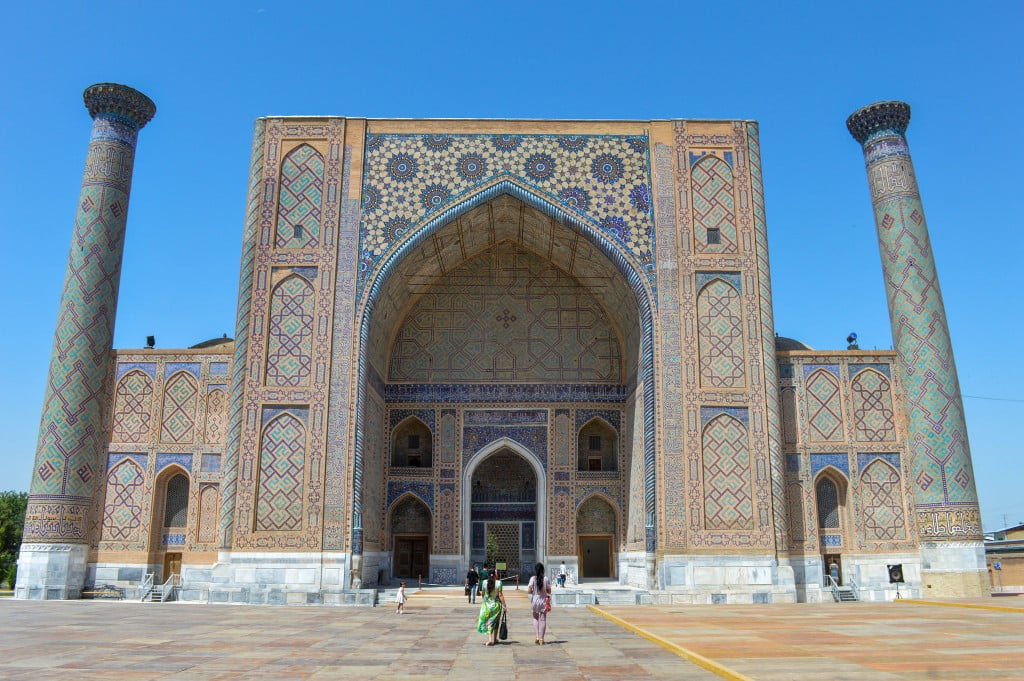Samarkand - Ulugh Beg Madrasa
The Ulugh Beg Madrasa is the oldest Madrasa on Registan Square in Samarkand and was built between 1417-1420 by the Temurid ruler and astronomer Ulugh Beg. The construction of this structure and later the observatory brought Samarkand fame as one of the most important scientific centres of the medieval Orient.

Ulugh Beg Madrasa was built in the western part of Registan Square, some years later Ulugh Beg Khanaka was built in front of it and the northern side was occupied by a caravanserai. The last two buildings existed for about two centuries and then at the beginning of the XVII century the Madrasa Sherdor and the Madrasa Tilla-Kari appeared in their place.
The rectangular Madrasa had four aywan and a square courtyard with deep niches around its perimeter leading to the rooms where the students lived. The back of the courtyard was occupied by a mosque and above the corner classrooms of the Madrasa there were four domes and four minarets at the corners of the building. The building faces the square with a majestic oriental portal with a high pointed arch, above which there is a mosaic panel with geometric ornamentation of coloured bricks, irrigation and carved ceramics.
The Ulugh Beg Madrasa in Samarkand was one of the best spiritual universities of the Muslim Orient in the XV century. According to the legend the famous poet, scientist and philosopher Abdurakhman Jami studied there. Lectures on mathematics, geometry, logic, natural sciences, teachings on man and world view and theology were given by famous scientists of that time: Kazizade ar-Rumi, Jemshid Giyas ad-Din al-Kashi, al-Kushchi and Ulugh Beg himself.
